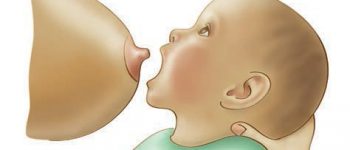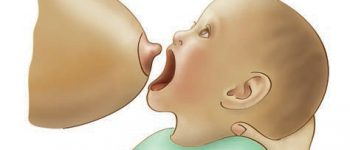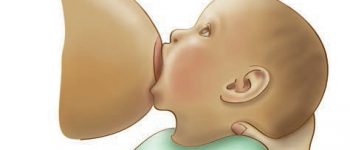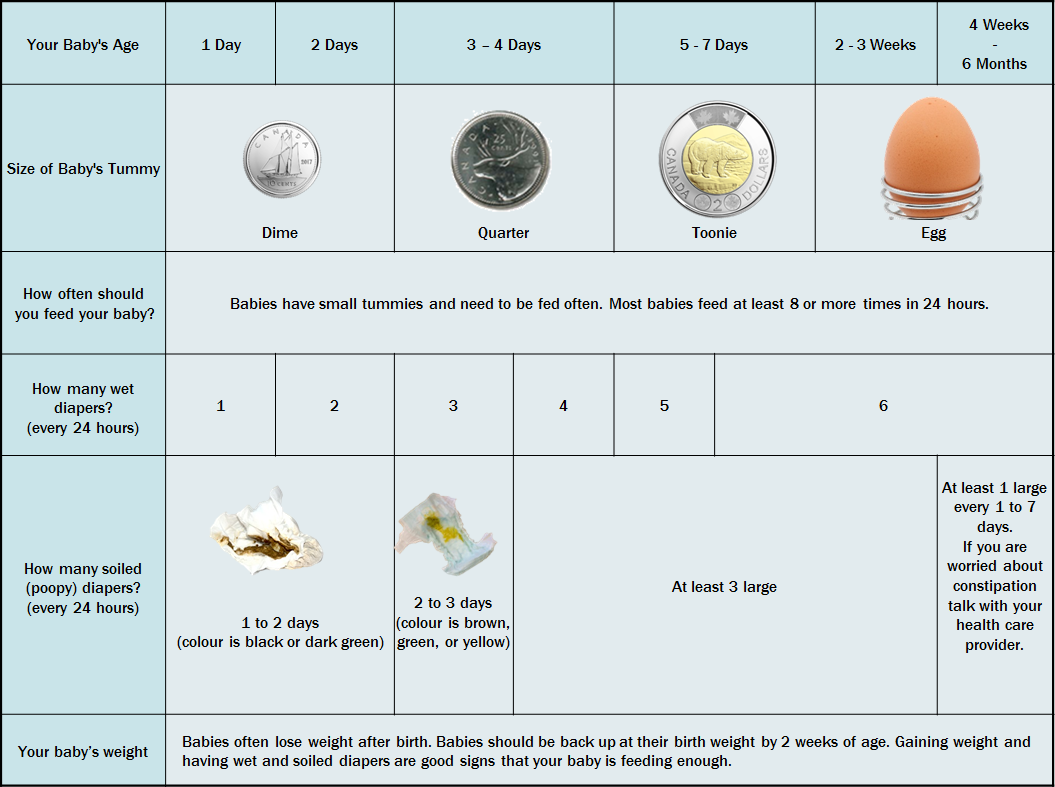First feedings
- Put your baby on your bare chest (skin-to-skin) so you can feed your baby right after birth.
- To get you started, the nurse, midwife or doula can help you with positioning and latching your baby.
- Your first milk is called colostrum. This thick, yellow fluid often called “liquid gold.” It is full of antibodies to help protect your baby from getting infections.
- After your baby’s first feed, they may sleep for a few hours and then wake to feed often. This is called cluster feeding. It is normal and helps your milk come in.
Did you know?
A lot of birth parents worry that their milk isn’t coming in. Colostrum is all your baby needs for the first few days. When your baby cluster feeds, it tells your body to make milk. Within two to four days, your breasts/chest will feel firmer and your milk supply will have increased.
Be patient with yourself and trust your body.
A good latch is key to breastfeeding
A good latch helps your baby get milk easily and reduces any breastfeeding pain that you might have.
Check out this video on latching your baby from Healthy Families BC



How to get a good latch:
- Support your baby’s head and neck between the shoulder blades.
- Position baby tummy to tummy, baby’s hands on either side of breast/chest.
- Align baby’s nose to the nipple and wait for baby to open wide. Once baby’s mouth is open wide, bring baby to your breast/chest.
- Their chin touches your breast/chest and their nose is slightly away from the breast/chest.
- Baby’s lips are rolled out and relaxed. Baby’s chin and tongue under the areola (the circular area around your nipple). Nipple is not centered in baby’s mouth, but off-centre.
- Baby will suck quickly, then more slowly with short pauses; you feel a tug on your nipple after the baby is latched on.
- If your baby has a deep latch, your nipples will look round, (not flat like the end of a lipstick tube) after feedings.
- After the first few days of feeding, you will hear a soft “kaa kaa” sound when your baby swallows.
- If you need to take your baby off your breast/chest, it hurts less if you break the suction first. This is easily done by slipping your finger into the side of baby’s mouth between the gum and press down on the area of your breast/chest closest to your baby’s mouth and gently pull down on your baby’s chin.
Did you know?
- When starting out it is common to have initial latching soreness as your nipples get used to the sensation of breastfeeding/chestfeeding.
- Once your baby learns to have a deep latch, initial latching tenderness should go away within a week.
- If you have pain throughout the entire feed, this is not normal. As soon as you feel pain, try repositioning and relatching your baby until you get a deeper more comfortable latch.
- If you continue to have pain, seek support from your public health nurse, lactation consultant, knowledge keeper or health- care provider.
How do I know when my baby is hungry?

Your baby will “tell you” they are hungry by:
- waking, stretching and stirring from sleep
- sucking on fingers or hands
- clicking or sucking on tongue
- opening mouth and looking for the breast
It’s best to watch your baby’s signals and feed them when you see that they are hungry, rather than waiting until they cry. See La Leche League Canada – Breastfeeding Support and Information for photos of what babies look like when they are hungry, very hungry and extremely hungry.
How often should I feed my baby?
- Always let your baby take the lead. While the actual number of feedings depends on your baby, all babies need to feed at least 8 times in 24 hours.
- Feed your baby whenever they are hungry (called cue-based feeding). In the first few weeks and during growth spurts it is normal for a baby to want to feed every 30 minutes or hourly.
How long does it take to breastfeed/chestfeed?
- Feeding time is usually 20 to 30 minutes but can be shorter or longer.
- Instead of timing how long the feed is, check if your baby is swallowing milk while on the breast/chest.
- Let baby feed on the first breast/side of chest until baby stops sucking and swallowing. Afterwards, try to burp baby and then offer the second breast/side of chest.
- If baby feeds on only one side, start baby on the other side at the next feeding.
- If baby falls asleep during a feeding, wake them up if they have not fed enough.
How do I know if my baby is getting enough milk?
- They are sucking strongly, slowly and steadily.
- You can hear baby swallowing.
- Your breasts/chest feels softer and less full after breastfeeding/chestfeeding.
- Baby is gaining weight (five to seven ounces or more per week).
- Baby regains birth weight by 14 days.
- Your baby has wet and soiiled (poopy) diapers as described in the chart below.

How does my baby show me that they are full?
Your baby is showing you that they are full when they:
- stop sucking
- let go of your breast/chest and turn their head away
- feel settled and relaxed
- stretch out their arms and legs
- spread their fingers
What can I expect with growth spurts?
As your baby grows and develops you may notice that your baby seems more hungry than normal. This is likely due to a growth spurt. You will probably notice your baby wants to feed more often. This is your baby’s way of telling your body to make more milk. Growth spurts are common when your baby is around:
- 10 days
- two to three weeks
- six weeks
- three months
- six months
At other times, your baby may be experiencing a growth spurt if they seem hungrier than usual.
Feed your baby according to their hunger cues and your body will quickly increase milk production to meet your baby’s needs.
When should I get support with breastfeeding/chestfeeding?
- You have nipple pain that won’t go away (could be thrush).
- Your baby makes clicking or smacking sounds during breastfeeding/chestfeeding.
- Your nipple is squished or flattened after feedings.
- You have bruising, redness or bleeding on your nipples.
- Your baby is not gaining weight.
For breastfeeding/chestfeeding support:
- Speak to your public health nurse, midwife, knowledge keeper or other healthcare provider for more information on breastfeeding.
- Breastfeeding/Chestfeeding Resources – Parenting in Manitoba
- Call the Breastfeeding Hotline at 204-788-8667 or 1-888-315-9257


